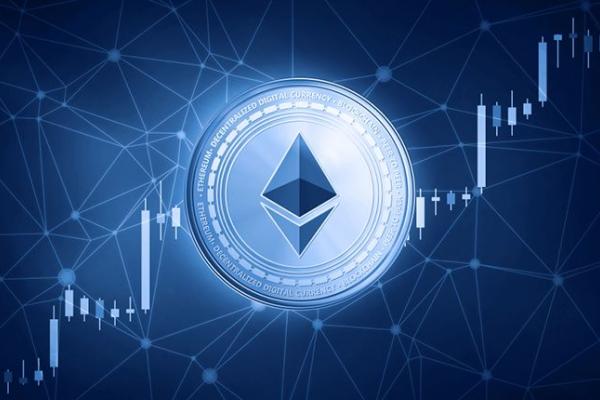What are the key features of blockchain data structure?
Unlike centralized databases, a blockchain is a distributed ledger that records transactions across multiple computers, ensuring that no single entity has control. Since the records are stored in various locations, the data remains safe and accessible even if some network computers fail or are compromised.
Blockchain technology operates transparently, allowing network participants to view transactions and enhances security by making the data immutable once recorded. The strength of this immutability comes from storing data in blocks, each connected to the previous one with a cryptographic link. If someone tries to alter the data, the cryptographic links in all subsequent blocks will change, making tampering detectable.
Devices called nodes are responsible for turning data into blocks and adding these blocks to the chain. Nodes that maintain a synchronized copy of the entire blockchain also have the power to verify transactions. During the verification process, nodes use various consensus algorithms to validate transactions and keep the records current. Once verified, transactions are grouped into blocks and securely added to the chain.
While blockchain technology offers a groundbreaking approach to data storage, it also creates huge challenges with querying and reading this data, necessitating the adoption of new methods for data processing and querying that diverge from traditional practices.
How is data processed and queried in blockchain?
When querying data in a blockchain network, one must access the distributed ledger stored across multiple nodes. Unlike traditional databases, which allow direct and real-time queries, blockchain data is typically queried in a read-only manner.
Users send queries to the network, requesting information from specific blocks or transactions, and nodes respond with the requested data. Due to the blockchain’s distributed structure, multiple connections may be necessary to ensure the accuracy and consistency of the obtained data. As such, querying data in a blockchain network tends to be slower than in traditional databases because it requires collecting and verifying data from multiple sources.
Another reason data queries are inefficient is the linear storage of data in blockchain networks. When querying a specific piece of data, it may be necessary to examine multiple blocks or even scan the entire chain one block at a time to locate the correct information, making it a time-consuming process.
Some protocols have introduced advanced indexing methods to optimize the process and enhance query performance. With these methods, decentralized application (DApp) developers can efficiently index and query data across various blockchain networks.
How can blockchain data and queries be improved?
Applying advanced indexing techniques and optimizing data retrieval processes can improve data processing and query performance in the blockchain ecosystem. Techniques such as precomputed indexes and caching frequently accessed data enable faster query results. With quicker access to stored data, DApp developers can save time and costs when scanning data.
SubQuery Network, a decentralized data indexing and querying protocol, provides a system that is fast to set up, manage and index for DApp developers to access blockchain data. The platform increases the speed of data querying and processing by distributing the data processing load across multiple nodes.
DApp developers can also benefit from SubQuery’s software development kit (SDK), which is designed to navigate the blockchain network, collect data and present it in an optimized format. An SDK is a collection of tools, libraries and code samples that developers use to create and integrate apps for specific systems. The SubQuery SDK includes instructions on how any indexer should navigate the blockchain, what data to collect and how it should be displayed to users.
In blockchain networks, it is crucial that data querying and processing are fast and continue to operate uninterruptedly. SubQuery ensures continuous data processing and querying with enterprise-level hosting services, featuring tools like GraphQL subscriptions and automatic history tracking for efficiency.
Additionally, SubQuery offers a remote procedure call (RPC) service that allows developers to also submit data to the blockchain networks. By combining both data writes and data reads into the same decentralized network, developers gain efficient data request processing while reducing latency and eliminating single points of failure. RPCs are vital for Web3 apps that require real-time data access and interactivity.
What is multichain indexing, and how does it work?
Blockchain networks, which historically operated separately as closed systems, lead to data fragmentation and inefficiencies. Recent innovations in layer 2s and application chains like Cosmos and Polkadot, show that developers are focusing on a more multi-chain approach. As a result, Multichain indexing eliminates inefficiency in blockchain networks by providing a single, compatible interface for querying data across multiple blockchains and a unified approach to data management. Without the need for dedicated data processing servers, developers can focus more on product development and user experience.
SubQuery allows developers to access and aggregate data from other sources seamlessly by simplifying the process of indexing and querying data across different blockchain networks. The platform supports various blockchain ecosystems, including Polkadot, Cosmos, Avalanche and Ethereum Virtual Machine (EVM)-compatible chains.
Developers can work on a single SubQuery project containing the same data schema and mapping files to index data across various blockchain networks. For example, a developer can capture all ERC-20 transactions for a given wallet across layer 2s or monitor IBC messages in Cosmos in a single project with a single database and query endpoint.
How do interconnected networks benefit Web3 devs?
Interconnected infrastructure offers developers numerous benefits, such as accessing and integrating data across multiple blockchain networks. Thus, developers can develop DApps that can interact with different blockchain ecosystems, providing greater functionality and versatility.
With support for over 200 networks, SubQuery takes multichain diversity a step further. SubQuery Network helps developers avoid the complexity of managing multiple data sources independently by allowing the use of a single set of tools and protocols for querying data. The platform accelerates the development cycle and facilitates easier scaling of apps across blockchain networks, resulting in a consistent user experience.
SubQuery’s decentralized structure enables data processing and querying to be distributed across multiple nodes, enhancing the system’s performance. The decentralized approach prevents bottlenecks and single points of failure common in traditional systems, ensuring that Web3 apps remain responsive even under high demand.
By enabling developers to create more complex and data-intensive apps, the platform encourages innovation and growth within the blockchain ecosystem. SubQuery recently reached 200 supported chains and shows no signs of slowing down. SubQuery offers a short form on GitHub to provide rapid and frictionless support to developers building EVM layer 2 networks and needing testnet support. The GitHub issue template triggers an automated action to add support for the EVM network, enabling network setup and testing, with indexing support available in just minutes.



